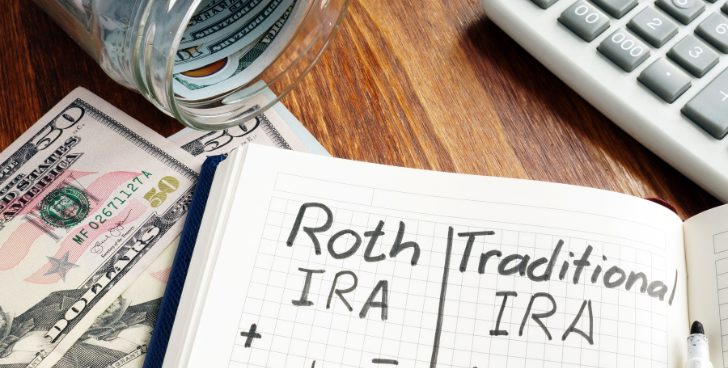

Understanding the taxation of our retirement dollars can be the difference between a good financial plan and a great financial plan. Many of us have heard the terms “traditional” and “Roth” when it comes to saving for retirement but what do those terms actually mean and how could they affect your retirement plan?
There are two main tax advantaged ways to save for retirement; the first is on a Traditional (also referred to as “pre-tax”) basis. The second is on a Roth basis (also referred to as “after-tax”).
Traditional (401(k), IRA, etc) contributions are made on a pre-tax basis. In other words, if we make a $6,000 Traditional IRA contribution we can deduct $6,000 from our income for the year. Therefore, we are reducing our taxable income for the year by $6,000.
Roth (401(k), IRA, etc) contributions are made with after-tax dollars. Meaning, these dollars are taxed in the year that we earn them. These contributions do not reduce our taxable income for the year.
Any contributions made (both Traditional and Roth) will then grow on a tax-deferred basis. Any investment gains made in the account will not be taxed until you withdraw dollars in retirement.
Traditional dollars withdrawn in retirement (contributions as well as any investments gains) will be taxed as income in the year that we withdraw them. If you were to take a $100,000 withdrawal from your Traditional IRA, you would therefore be showing $100,000 in taxable income for that year.
Typically, Roth dollars withdrawn from your retirement accounts are completely tax free (both contributions and investments gains). That same $100,000 withdrawal that was reported as income when taken from your Traditional IRA is completely tax-free if taken from your Roth IRA.
Furthermore, because someone has never paid tax on any of their Traditional dollars, individuals are subject to what is called a “Required Minimum Distribution (RMD)”. Under current U.S. law, you are required to withdraw a portion of your Traditional dollars each year starting at age 72.
There are many factors when deciding when to save on a Traditional or Roth basis. Typically, Roth contributions are best suited for someone who expects to be in a higher tax bracket when he or she is in retirement and Traditional contributions are best suited for someone who expects to be in a lower tax bracket when he or she is in retirement.
To better understand what might be best for you, contact your tax professional and/or your financial advisor.
Start a conversation to learn more about who we are and what we do. Our team is ready to make an impact.
Contact Us